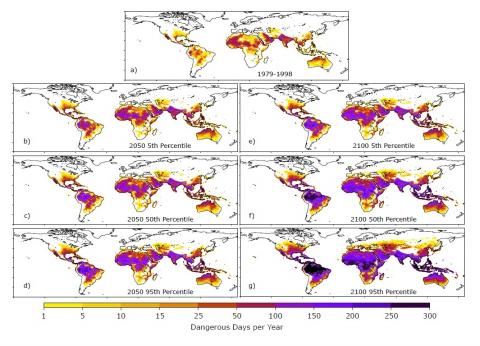Climate change and an ageing population will accentuate disparities in heat and cold deaths in Europe
A modelling study published in The Lancet Public Health using data from 854 European cities estimates that heat-related deaths will triple in Europe by 2100 under current climate policies. A slight decrease in cold-related deaths is projected, while heat-related deaths will increase in all parts of Europe. The most affected areas will include Spain, Italy, Greece and parts of France. Currently, around eight times as many people in Europe die from cold as from heat, but this proportion is projected to decrease considerably by the end of the century.

Gary Konstantinoudis - muertes frío calor EN
Gary Konstantinoudis
Imperial Research College Fellow at the MRC Centre for Environment and Health
This high-quality study, using data from multiple European countries, provides valuable insights into the impact of non-optimal temperatures on non-accidental mortality.
The analysis is based on a previous Lancet paper which assumes that the effect of temperature on all-cause non-accidental mortality is constant between 2000 and 2019. Previous studies, including one with overlapping data have reported a decrease in heat-mortality impact over time, due to factors including infrastructural changes and improved health care. Not accounting for this is expected to overestimate the future impact of heat on mortality.
According to the literature, it is expected that most estimated deaths are likely among individuals with underlying chronic conditions, such as cardiovascular or respiratory diseases, or those with pre-existing mental health challenges. Moving forward, it will be crucial to differentiate the specific impact of temperature on these conditions and to account for their evolving trends when making projections.
Leslie Mabon - muertes frío calor EN
Leslie Mabon
Senior Lecturer in Environmental Systems at the School of Engineering and Innovation, The Open University
The results are broadly in line with what existing research has shown in multiple contexts around the globe – namely, that temperature extremes do not affect everyone equally, with the elderly and the least well-off being most at risk. What is especially striking is that the authors find clear differences in risk across country boundaries and also regional clusters of mortality risk. Temperature gradients do not respect borders, so as the authors point out, this shows how demographic and socio-economic factors influence the risk we face from temperature extremes. There are countermeasures we can take, which may be particularly effective if they are targeted towards the most vulnerable people and places. For example, the study points to investment in health infrastructure, the presence of heat- and cold preparedness plans, and the quality of the buildings we live and work in as factors that could reduce mortality under a changing climate.
David García-León et al.
- Research article
- Peer reviewed
- Modelling



